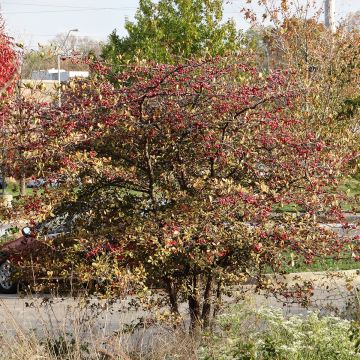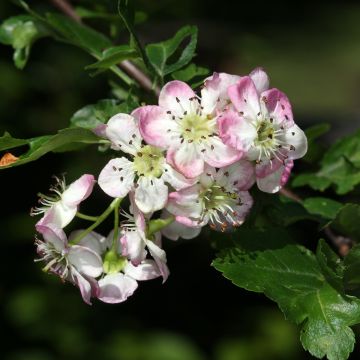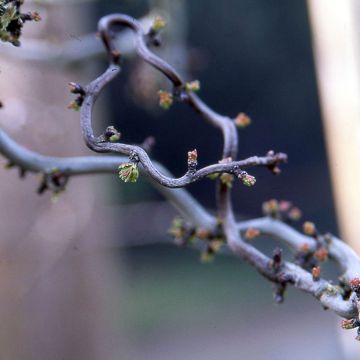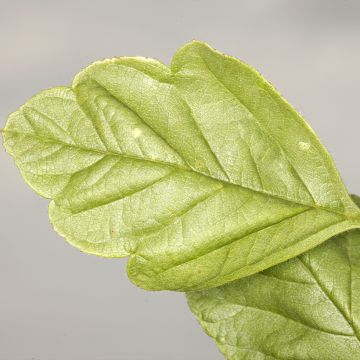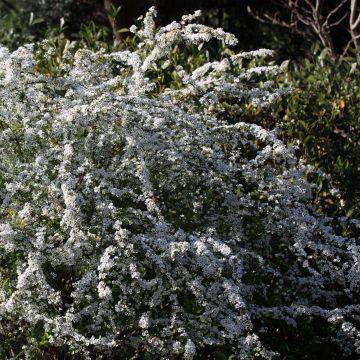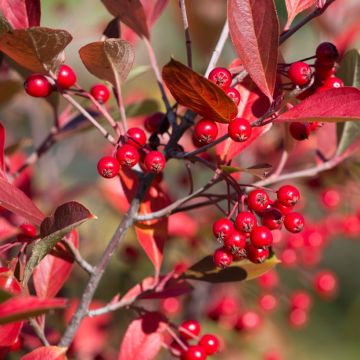

Crataegus prunifolia Splendens - Hawthorn


Crataegus prunifolia Splendens - Hawthorn


Crataegus prunifolia Splendens - Hawthorn


Crataegus prunifolia Splendens - Hawthorn
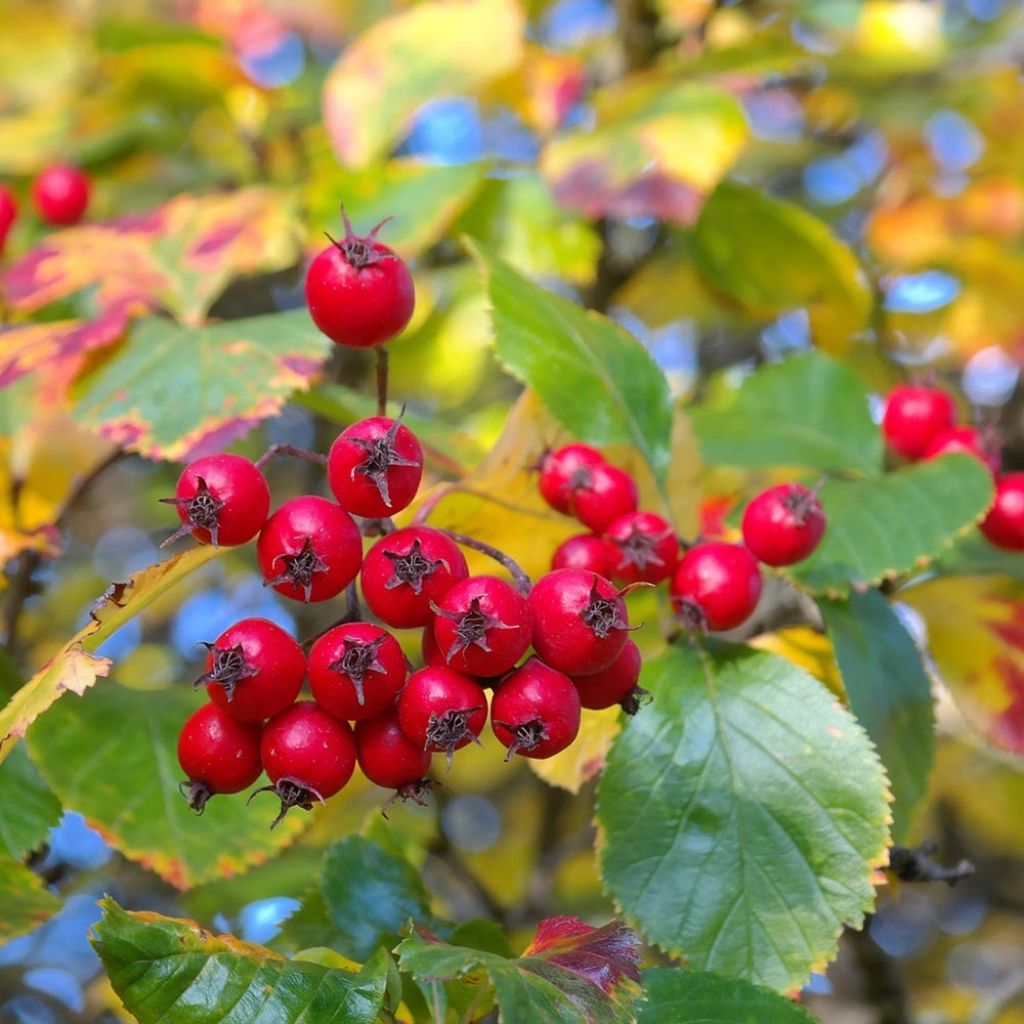

Crataegus prunifolia Splendens - Hawthorn
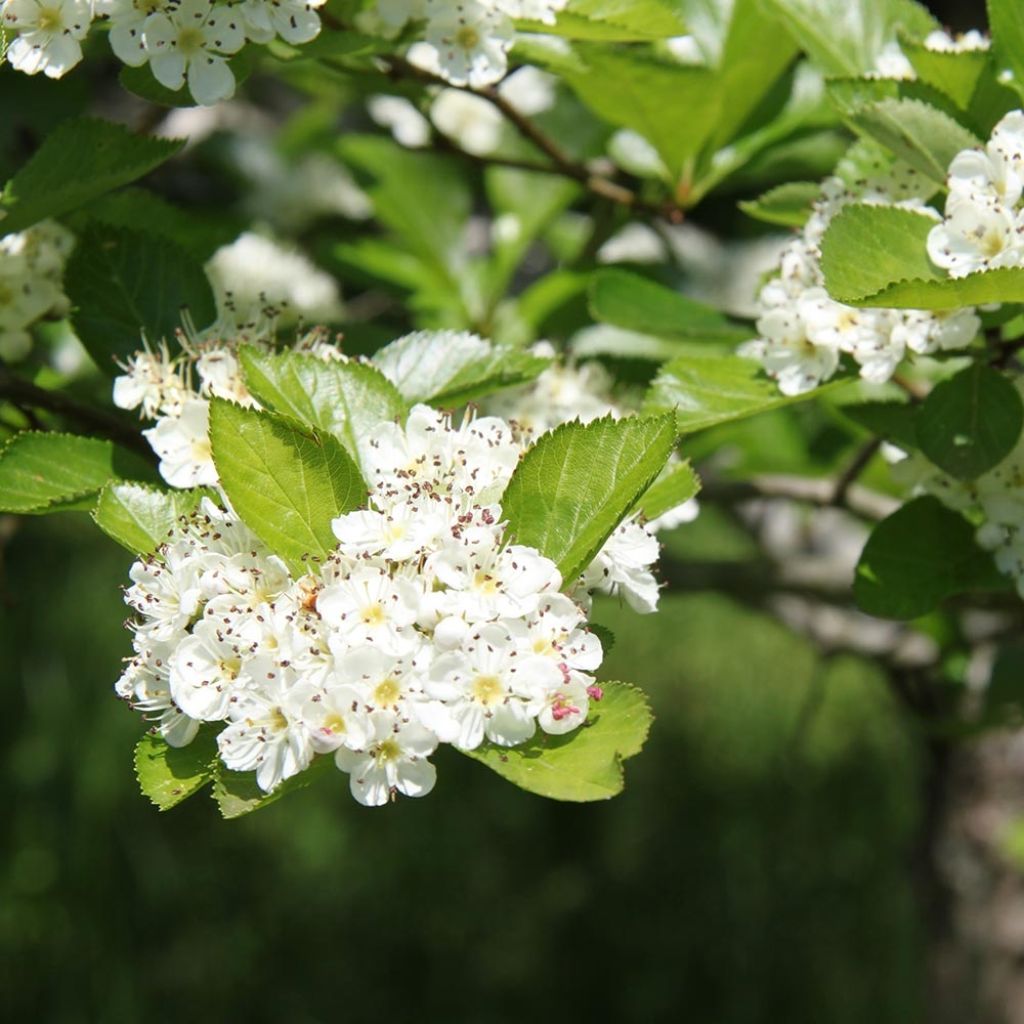

Crataegus prunifolia Splendens - Hawthorn
Crataegus prunifolia Splendens - Hawthorn
Crataegus prunifolia Splendens
Cockspur Hawthorn, Broad-leaved Cockspur Thorn
Special offer!
Receive a €20 voucher for any order over €90 (excluding delivery costs, credit notes, and plastic-free options)!
1- Add your favorite plants to your cart.
2- Once you have reached €90, confirm your order (you can even choose the delivery date!).
3- As soon as your order is shipped, you will receive an email containing your voucher code, valid for 3 months (90 days).
Your voucher is unique and can only be used once, for any order with a minimum value of €20, excluding delivery costs.
Can be combined with other current offers, non-divisible and non-refundable.
Why not try an alternative variety in stock?
View all →This plant carries a 24 months recovery warranty
More information
We guarantee the quality of our plants for a full growing cycle, and will replace at our expense any plant that fails to recover under normal climatic and planting conditions.
Would this plant suit my garden?
Set up your Plantfit profile →
Description
Crataegus prunifolia 'Splendens' is a small tree with a spreading, rounded and dense habit, rarely exceeding 8m (26ft) in height and 6m (20ft) in spread. It is distinguished by its magnificent autumnal colouration, whether it be from its small scarlet red fruits or its foliage that takes on warm hues. The thorny branches bear glossy dark green, deciduous, leathery foliage. Flowering occurs in May with numerous fragrant white flowers, clustered in corymbs. Easy to grow and highly ornamental, this beautiful hawthorn will find its place in any garden, even small ones.
Crataegus prunifolia 'Splendens', sometimes known as Crataegus persimilis 'MacLeod', is an old cultivar, known in Europe since the 19th century. It belongs to the large Rosaceae family. This small tree has a long lifespan, with very hard wood, measuring approximately 8m (26ft) in height and 6m (20ft) in spread at maturity with a rounded and dense habit. Its branches bear long thorns, around 4cm (2in) in length. The foliage is alternate and deciduous. It is composed of simple, wide leaves, measuring 5 to 8cm (2 to 3in) in length, ovate in shape, without lobes, and deeply toothed. The leaves are glossy dark green, turning to orange-red to yellow in autumn. It produces numerous fragrant white flowers, clustered in dense, flat corymbs. The flower corollas consist of 5 rounded petals and numerous stamens with light pink anthers that turn purple. The flowers are highly attractive to bees. In September-October, it prouduces bright scarlet red fruits called 'haws', approximately 1cm (0.4 in) in diameter. They persist on the plant until the heart of winter and are consumed by birds.
Crataegus prunifolia 'Splendens' adapts well to any well-drained soil, even chalky soil, in a sunny or partially shaded position. It is undemanding and hardy, and may require occasional pruning in February. With its small size, it can be planted in gardens of all sizes, either as a solitary specimen, in the foreground of a bed, in a row along a path, or integrated into a rural or defensive hedge. Resistant to pollution and sea spray, it is an excellent choice for urban or coastal gardens.
Crataegus prunifolia Splendens - Hawthorn in pictures






Plant habit
Flowering
Foliage
Botanical data
Crataegus
prunifolia
Splendens
Rosaceae
Cockspur Hawthorn, Broad-leaved Cockspur Thorn
Central Europe
Other Hawthorn Crataegus
View all →Planting and care
Place it in a sunny or semi-shaded location. Plant it in dry and warm, calcareous and, above all, well-drained soil. After flowering or in autumn (February-March or August-September), prune and remove the rebellious or tangled stems that compromise the tree's proper habit. Trim the overly long branches. It can be affected by caterpillars, aphids, rot, rust, and powdery mildew. It is particularly sensitive to fire blight, which can be an obstacle to its planting near apple and pear orchards.
Planting period
Intended location
Care
Planting & care advice
This item has not been reviewed yet - be the first to leave a review about it.
Similar products
Haven't found what you were looking for?
Hardiness is the lowest winter temperature a plant can endure without suffering serious damage or even dying. However, hardiness is affected by location (a sheltered area, such as a patio), protection (winter cover) and soil type (hardiness is improved by well-drained soil).

Photo Sharing Terms & Conditions
In order to encourage gardeners to interact and share their experiences, Promesse de fleurs offers various media enabling content to be uploaded onto its Site - in particular via the ‘Photo sharing’ module.
The User agrees to refrain from:
- Posting any content that is illegal, prejudicial, insulting, racist, inciteful to hatred, revisionist, contrary to public decency, that infringes on privacy or on the privacy rights of third parties, in particular the publicity rights of persons and goods, intellectual property rights, or the right to privacy.
- Submitting content on behalf of a third party;
- Impersonate the identity of a third party and/or publish any personal information about a third party;
In general, the User undertakes to refrain from any unethical behaviour.
All Content (in particular text, comments, files, images, photos, videos, creative works, etc.), which may be subject to property or intellectual property rights, image or other private rights, shall remain the property of the User, subject to the limited rights granted by the terms of the licence granted by Promesse de fleurs as stated below. Users are at liberty to publish or not to publish such Content on the Site, notably via the ‘Photo Sharing’ facility, and accept that this Content shall be made public and freely accessible, notably on the Internet.
Users further acknowledge, undertake to have ,and guarantee that they hold all necessary rights and permissions to publish such material on the Site, in particular with regard to the legislation in force pertaining to any privacy, property, intellectual property, image, or contractual rights, or rights of any other nature. By publishing such Content on the Site, Users acknowledge accepting full liability as publishers of the Content within the meaning of the law, and grant Promesse de fleurs, free of charge, an inclusive, worldwide licence for the said Content for the entire duration of its publication, including all reproduction, representation, up/downloading, displaying, performing, transmission, and storage rights.
Users also grant permission for their name to be linked to the Content and accept that this link may not always be made available.
By engaging in posting material, Users consent to their Content becoming automatically accessible on the Internet, in particular on other sites and/or blogs and/or web pages of the Promesse de fleurs site, including in particular social pages and the Promesse de fleurs catalogue.
Users may secure the removal of entrusted content free of charge by issuing a simple request via our contact form.
The flowering period indicated on our website applies to countries and regions located in USDA zone 8 (France, the United Kingdom, Ireland, the Netherlands, etc.)
It will vary according to where you live:
- In zones 9 to 10 (Italy, Spain, Greece, etc.), flowering will occur about 2 to 4 weeks earlier.
- In zones 6 to 7 (Germany, Poland, Slovenia, and lower mountainous regions), flowering will be delayed by 2 to 3 weeks.
- In zone 5 (Central Europe, Scandinavia), blooming will be delayed by 3 to 5 weeks.
In temperate climates, pruning of spring-flowering shrubs (forsythia, spireas, etc.) should be done just after flowering.
Pruning of summer-flowering shrubs (Indian Lilac, Perovskia, etc.) can be done in winter or spring.
In cold regions as well as with frost-sensitive plants, avoid pruning too early when severe frosts may still occur.
The planting period indicated on our website applies to countries and regions located in USDA zone 8 (France, United Kingdom, Ireland, Netherlands).
It will vary according to where you live:
- In Mediterranean zones (Marseille, Madrid, Milan, etc.), autumn and winter are the best planting periods.
- In continental zones (Strasbourg, Munich, Vienna, etc.), delay planting by 2 to 3 weeks in spring and bring it forward by 2 to 4 weeks in autumn.
- In mountainous regions (the Alps, Pyrenees, Carpathians, etc.), it is best to plant in late spring (May-June) or late summer (August-September).
The harvesting period indicated on our website applies to countries and regions in USDA zone 8 (France, England, Ireland, the Netherlands).
In colder areas (Scandinavia, Poland, Austria...) fruit and vegetable harvests are likely to be delayed by 3-4 weeks.
In warmer areas (Italy, Spain, Greece, etc.), harvesting will probably take place earlier, depending on weather conditions.
The sowing periods indicated on our website apply to countries and regions within USDA Zone 8 (France, UK, Ireland, Netherlands).
In colder areas (Scandinavia, Poland, Austria...), delay any outdoor sowing by 3-4 weeks, or sow under glass.
In warmer climes (Italy, Spain, Greece, etc.), bring outdoor sowing forward by a few weeks.


































